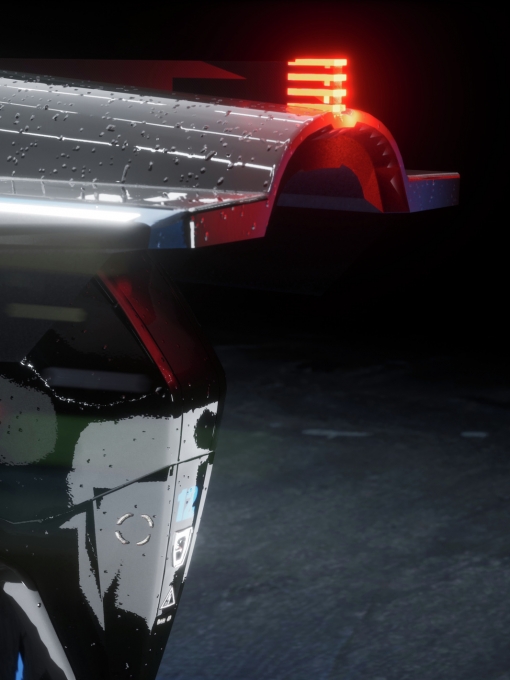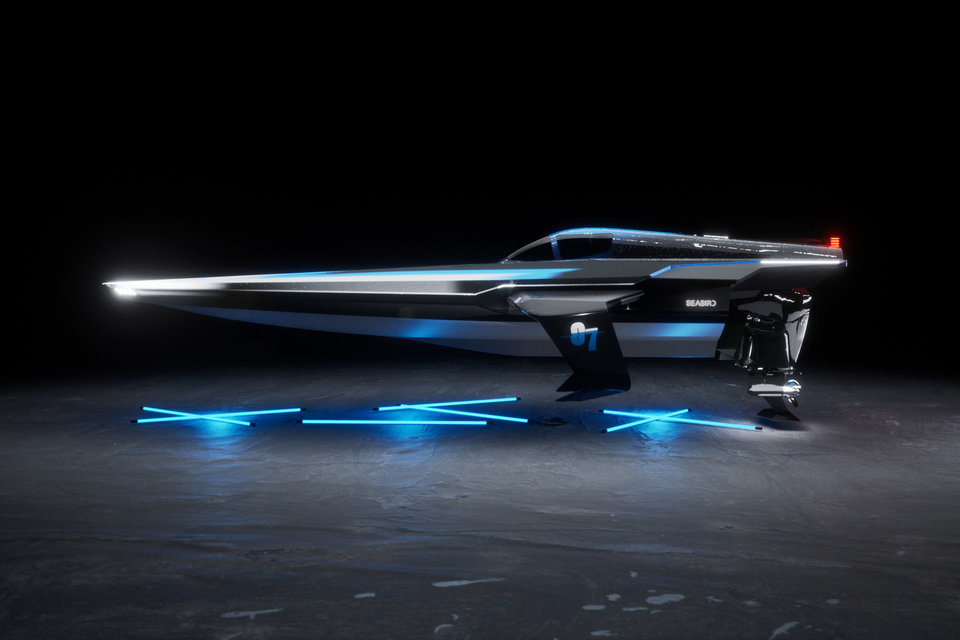E1 Series and PIF announce partnership to create world’s first electric powerboat championship
Electric Sea Racing Limited (‘E1 Series’) and Public Investment Fund (PIF) have entered into a partnership that will see PIF support in creating the world’s first electric powerboat racing championship.
The news was revealed today during a virtual launch event, where E1 Series organisers also unveiled the new design of the electric RaceBird powerboat ahead of World Oceans Day on June 8.
The partnership represents a significant step forward in the long-term development of the championship, providing a strong foundation on which to build from and enabling the series to further accelerate preparations for the inaugural season, scheduled to take place in early 2023 – with Saudi Arabia to be one of the considered race locations.

As a major contributor to the global economy and partner of choice for innovative companies and investors, PIF’s investment in E1 is in line with its 2021-2025 strategy announced earlier this year, which focuses on 13 key strategic sectors, including sports and entertainment, and renewable energy. This includes major investments in renewable energy companies, such as ACWA Power and the Sudair Solar Energy project, as well as in the development of electric vehicles through its investment in Lucid Motors.
Series creators Alejandro Agag, Chairman of E1, and Rodi Basso, CEO of E1, were both joined live in the studio by the President of the Union Internationale Motonautique (UIM) Raffaele Chiulli, as well as SeaBird Technologies Founder Sophi Horne, and Founder & CEO of Victory Marine Brunello Acampora to present the RaceBird powerboat.

The vessel is a completely new design and was co-created by Horne and Acampora following an extensive validation process. The RaceBird is inspired by nature and birds flying low over the water and features an outboard motor, enclosed safety canopy and hydrofoil technology.
Using innovative hydrofoil technology, the electric RaceBird powerboats will rise high above the water’s surface, allowing for minimum drag and maximum energy efficiency. Being lifted above the waves will not only improve performance, but it will also promote close and competitive racing with a reduced wake when following an opponent.

The RaceBird is specially designed for foil-to-foil racing and is capable of reaching speeds up to 50 knots (93 km/h or 58 mph), with pilots showcasing their skills using tight and technical circuits located close to shore in the heart of urban areas.
With the design now validated, the RaceBird has entered into the production phase with the expert engineers at Victory Marine concentrating their efforts and resource over the coming months on manufacturing a full fleet of race-ready electric powerboats.
Alejandro Agag, Co-Founder & Chairman of E1, said: “It gives me great pleasure to welcome on board PIF as a new partner in this exciting venture. To get the backing of PIF at this early stage of development emphasises the importance of our mission to electrify marine mobility. With the new design of the RaceBird boat you see today, we hope to accelerate change in the marine industry and provide sustainable solutions for future leisure craft. The new powerboat that Sophi and Brunello designed looks like a spaceship. I’ve compared electric racing cars to podracers from Star Wars in the past, but the RaceBird looks even more futuristic. Working together with PIF, I look forward to ushering in a new era of electric powerboat racing.”
Rodi Basso, Co-Founder & CEO of E1, said: “We’re thrilled to be working together with PIF to jointly shape the future direction of powerboating. Forming a strong partnership with a global investment powerhouse such as PIF provides a solid foundation on which to build a new sport. The RaceBird presents a unique challenge and one that the teams at SeaBird Technologies and Victory Marine have delivered on. They’ve managed to develop an innovative powerboat with an eye-catching design and factored in practical solutions ready to go racing. Shortly we’ll also be announcing our powertrain and electronics partners; we’re on schedule to hit the water soon.”
Commenting on the announcement, HE Yasir Al-Rumayyan, Governor of the Public Investment Fund, said: “This exciting investment in a new premier sport format aligns with our strategy to enable innovation globally and unlock new industries, as well as build strategic partnerships with real value add to Saudi Arabia. We believe our support for future sports will also contribute to the growth of various sectors globally.
“Our partnership with E1 will help drive the development of innovative sustainable technology, which in turn positions Saudi as an enabler in the industries of the future and the creation of new opportunities.”
Sophi Horne, Founder of SeaBird Technologies, said: “It’s amazing to finally be able to share the new RaceBird design with the world. Obviously, I’ve seen it on a screen quite a lot in the past few months! But it’s great to show the new look of the boat that the pilots will race with. The bodywork and shape of the vessel is inspired by nature and birds flying above the water’s surface. What has been interesting is trying to find a balance between how you envisage the design and combining that with optimising both performance and efficiency. The solution we settled on fortunately doesn’t compromise on either the looks or performance capabilities.”
Brunello Acampora, Founder & CEO of Victory Marine, said: “Today’s announcement is the result of many months of hard work, creating a completely new design and simulating it in a competitive racing environment. I’ve really enjoyed working together with Sophi to produce the vessel that will compete in the world’s first electric powerboat championship. Now that the design has been fully validated, we’ll begin engineering and manufacturing the boats in preparation for prototype testing and ready for the teams to receive their first delivery. For us at Victory Marine, the E1 Series is the greatest test bench for cutting-edge solutions that will change the future of navigation forever.”
Dr. Raffaele Chiulli, President of the UIM, said: “At the International Powerboat Federation, we’re delighted to be part of this groundbreaking development in the powerboating sport. The futuristic RaceBird design combined with the use of hydrofoil technology in the E1 Series reflects the pioneering spirit of this initiative and are an inspiring answer to today’s challenges facing marine mobility. It’s an exciting moment for our sport and I cannot wait to see the RaceBird on the water.”
Released ahead of World Oceans Day, the RaceBird acts as a symbol of the future ambitions of the E1 Series, to revolutionise marine mobility and reduce the pressures being placed on fragile underwater ecosystems across the world.
The next major milestone in the RaceBird development is in September when the covers come off the first full-scale model at the Monaco Yacht Show, before the start of prototype testing which is set to get underway later this year.
E1 were advised by Shoosmiths law firm and financial advisers PJT Partners.































